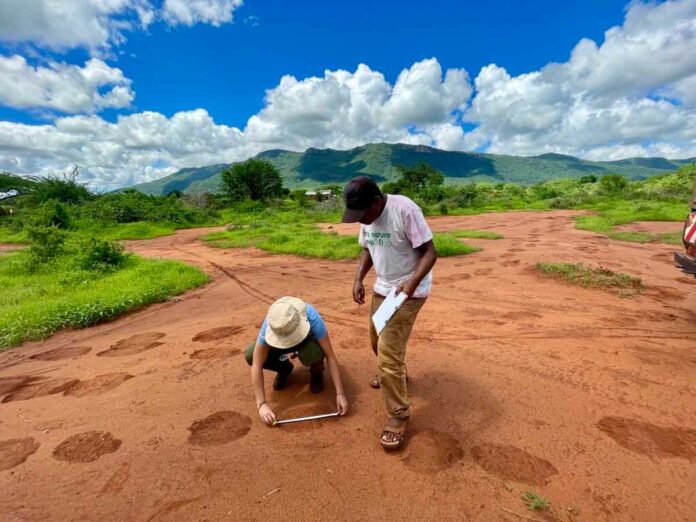Human-elephant conflict is escalating across Africa. So, researchers are looking for new ways to keep an eye on wild African elephants. They are even turning to space technologies for help.
Researchers from Save the Elephants and the Department of Biology at the University of Oxford tracked elephant footprints for the first time ever. They tracked these footprints in the rural community of Sagalla in Tsavo Kenya. It is a hotspot for crop-raiding elephants. They have used a high-resolution hand-held Garmin GPS that captures point-to-point fixes every 3-5 seconds. Scientists overlaid it with free high-resolution satellite imagery to identify how plant diversity on a micro-scale affects elephants.
They discovered that elephants make deliberate decisions about which paths to take based solely on their favourite food. The findings were recently published in the journal Remote Sensing. These could be critical in assisting conservationists in forecasting potential hotspots for human-elephant conflict (HEC).
Scientists were able to map every piece of vegetation within each 10m pixel in and around Sagalla. They have used Sentinel 2A imagery obtained through an open-source satellite managed by the European Space Agency. The elephants were normally tracked every hour. The handheld satellite GPS captured every twist and turn, every thorny thicket, and every tree that an elephant would take on its chosen path. The study’s elephant data spans the years January 2015 to 2020.
According to the findings, bull elephants prefer to walk along paths that contain or lead to plants called Combretum and Cissus. These are only eaten by bulls. Family groups will walk paths with Commiphora and Terminalia. These are a dietary preferences for females and young calves. When the two groups merge and move together, they choose paths that contain or lead to areas where both preferred delicacies are available. It ensured that there is something for everyone.
The study helped scientists to understand how elephants access their preferred vegetation. It will assist conservation managers in focusing resources on potential conflict hotspots outside protected areas and better protecting plant diversity within parks and buffer zones. Scientists can now better understand the impact of human encroachment and vegetation removal on elephant movement. They can map the location and composition of specific vegetation species within plant communities.
Save the Elephants, the University of Oxford and the Sagalla community have been collaborating since 2009. They begin with a project to investigate how beehive fences could be used to reduce elephant conflict. The Sagalla community approached the researchers to help them better understand why and where elephants were foraging in the buffer zone of vegetation between the houses and the park boundary.

